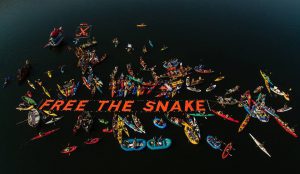
Roadless Area Protection
The idea to protect outstanding natural areas as national parks and undeveloped public lands (including undeveloped portions of national parks) as wilderness originated in United States. The development, and in particular, the motorization and mechanization of formerly wild areas of the public domain, alarmed conservationists in the early 20th century. The two major public land management agencies at the time–the US Forest Service, managing the national forests, and the National Park Service, managing the national park units–were both building roads into wild country, albeit for different reasons. This idea to protect wild backcountry areas as wilderness was refined by some Forest Service employees like Aldo Leopold, Bob Marshall (who also worked for the Interior Department), and Arthur Carhart. Other individuals in and out of government including Olaus Murie, Mardie Murie (the first woman to graduate from the University of Alaska in Fairbanks), Harvey Broome, Benton MacKaye, Ernest Oberholtzer, and Robert Sterling Yard, all contributed to the wilderness preservation effort. Read more.

Forest Management & Collaboration
Approximately 200-million board feet of timber came off the Clearwater National Forest on an annual basis in the 1970′s. The neighboring Nez Perce National Forest produced about 125-million board feet every year. Both forests combined yielded an unsustainable annual cut of approximately 325-million board feet! The 1980′s saw a modest decline, with both forests combined still producing approximately 275-million board feet. By the time the 1990s rolled around, the combined annual cut on both forests was approximately 70-million board feet. Read more.
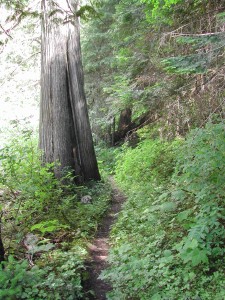
Forest Plan Revision
The Nez Perce-Clearwater National Forests is working towards updating its Forest Plan. The Forest Plan will supply direction and guide agency management for these two forests over the next ten to fifteen years, possibly longer. A Forest Plan includes recommended Wilderness, Wilderness administration and stewardship, management of roadless areas, recommendations for wild and scenic river designation, establishment of Research Natural Areas, protective measures for sensitive soils, old growth forests, stream-side buffers and riparian areas, as well as measurable and enforceable standards for water quality and fish and wildlife habitat. Read more.
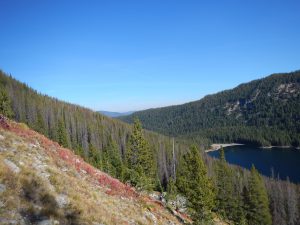
Wilderness Character & Stewardship
Section 4(b) of the 1964 Wilderness Act states, “each agency administering any area designated as wilderness shall be responsible for preserving the wilderness character of the area and shall so administer such area for such other purposes for which it may have been established as also to preserve its wilderness character.” Wilderness stewardship should be guided by maintaining wilderness character, and ensuring experiences of a special quality. Agency actions (including non-agency entities that have proper authorization) inside Wilderness must meet “minimum requirements” and “minimum tool” guidelines. Learn more.
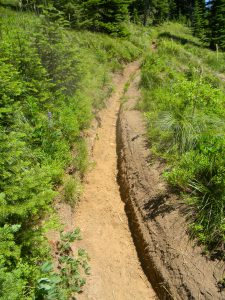
Off-Road Vehicles
The use of off-road vehicles (ORV) on federal public lands has rapidly increased over the past fifty years. ORV’s are permitted, under certain circumstances, by all four federal land management agencies: National Park Service, Bureau of Land Management, US Forest Service and the US Fish & Wildlife Service. Four-wheelers, motorcycles and snowmobiles are allowed on the Clearwater and Nez Perce National Forests. A Forest Travel Plan guides decisions for where and when ORV’s are allowed on the National Forests (unfortunately, mountain bikes are only occasionally addressed in Forest Plans, despite the fact they cause impacts). Read more.
Privatization of Public Lands
For some time now, corporate interests have been  trying to turn public wildlands managed by the US Forest Service and Bureau of Land Management into a cash cow for the recreation industry. Sadly, this program is well on its way to privatizing, marketizing and commodifying outdoor recreation, amounting to a disneyfication of nature so that it is no longer wild. (NOTE: Unfortunately, National Parks have long had concessionaires, who unduly influence National Park policy, and that trend is becoming worse with corporate sponsorship in National Parks). Read more.
trying to turn public wildlands managed by the US Forest Service and Bureau of Land Management into a cash cow for the recreation industry. Sadly, this program is well on its way to privatizing, marketizing and commodifying outdoor recreation, amounting to a disneyfication of nature so that it is no longer wild. (NOTE: Unfortunately, National Parks have long had concessionaires, who unduly influence National Park policy, and that trend is becoming worse with corporate sponsorship in National Parks). Read more.

Wildland Fire & Salvage Logging
Wildfire is a natural disturbance event critical to ecosystem function. Mixed conifer forests like those in Clearwater Country have evolved with fire over the millennia. Wildland fires are not “catastrophic” or “damaging.” They restore forests by replenishing soils with important nutrients. Wildland fires burn with mixed-severity and create a forest mosaic, which leads to an increase in biodiversity and post-fire habitat for numerous insects, bird and other native species. Read more.

Suction dredge mining
Suction dredging is a generally noisy, environmentally damaging practice that involves moving bed-load sediment in a river or stream from one location to another. Gasoline or diesel motors are mounted on top of rafts, and attached to hoses or vacuums that suck up the bed of a gravel stream before being discharged out the other end. It results in river bottoms stripped of sand and gravel, degraded spawning beds for wild steelhead, salmon and bull trout and loss of habitat for insects, which provide food for various fish species. Read more.

Upper Lochsa Land Exchange
In the 1800′s Congress passed a series of laws granting lands to railroad companies to promote settlement and development in the West. This resulted in certain checkerboard landscapes, in which every other square mile was either private or public land. Lands in the upper Lochsa have a checkerboard landscape pattern. The Northern Pacific Railroad ended up being completed north of the Clearwater Basin, however. The railroad barons did not live up to the requirements in the legislation, though, and tragically, those lands were not returned to public ownership. Read more.
Four Lower Snake River Dams
The Clearwater Basin of north-central Idaho provides excellent habitat for wild salmon and steelhead. The Wild Clearwater Country is the northern half of the Big Wild, which contains the largest remaining roadless and undeveloped stretch of wildlands left in the lower 48 states. Native wild salmon and steelhead populations have called this place home for millennia. Read more.

Highway 12 scenic corridor
A single paved road divides the Big Wild: US 12. Officially designated the Northwest Passage Scenic Byway, it stretches from Lewiston, Idaho to Lolo Pass and the Idaho-Montana state-line. For approximately 170-miles the narrow, two-lane highway cuts through the Nez Perce Reservation, accompanies the entire length of the Clearwater River, and hugs the picturesque Lochsa River. In 1968, Congress designated both the Middle Fork Clearwater and the Lochsa Rivers as wild & scenic waterways, with a goal of preserving the rivers and “their immediate environments” for present and future generations. Read more.

Gray Wolf Recovery
Gray wolves are native to the wild forests of the Clearwater Basin. No one is certain if wolves in the Clearwater survived the US Biological Survey (known today as the USDA Wildlife Services) nation-wide predator eradication program in the early 20th Century. We do know that government officials verified that wolves had occupied habitat in the Weitas Creek and Kelly Creek drainages on the Clearwater National Forest in the 1970s. It’s possible wolves were present in the Clearwater when the federal government began gray wolf recovery efforts in the mid-1990s. Read more.

Wolverine Recovery
There are approximately 300 wolverines remaining in the Lower 48. More than half of the population exists in Montana, with smaller populations in Wyoming, Idaho and Washington. There has been a confirmed sighting(s) of the species in Oregon, California and Colorado. Research suggests that the biggest population of wolverines is in Glacier National Park, with the second biggest population (no one knows exactly how many) occurring in the Clearwater. Read more.

Canada lynx Recovery
Approximately 1,000 Canada lynx inhabit a portion of their historical range in the Lower 48. Lynx prefer forested and high-elevation areas, with small populations in Washington, Idaho, Montana, Wyoming, Utah and Colorado. Other populations occur in Maine and Minnesota. Research suggests there are approximately 100 lynx in Idaho, though there has not been a confirmed breeding pair in some time. A Forest Service wildlife biologist had a confirmed lynx sighting along the Lochsa River in the 2000′s. Learn more.

Fisher Recovery
A formal petition to the U.S. Fish & Wildlife Service was submitted in September 2013 to seek protection for the imperiled Northern Rockies Fisher as threatened or endangered under the Endangered Species Act. The petition also requested that critical habitat be designated, in conjunction with a finding that the fisher, indeed, warrants federal protection. Trapping, predation, disease, road building, logging and loss of habitat, particularly old-growth forests, have led to the sharp decline of the formidable predator. Learn more.
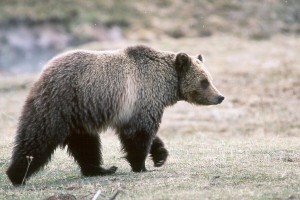
Grizzly Bear Recovery
Grizzly bears were once common throughout the Clearwater Basin and the Bitterroots. All that changed within one-hundred years of the Lewis & Clark Expedition passing through the region in the early 1800′s. Trappers, hunters, homesteaders and ranchers soon took their toll on the “silver-tipped” grizzly bears found along mountain ridges, prairies and various drainages of the Lochsa, Selway and forks of the Clearwater. Learn more.

Bull Trout Recovery
Bull trout were historically found in approximately 60% of the Columbia Basin. Today their population is highly diminished and fragmented and found in less then half their historic range. Scattered populations exist in Oregon, Washington, Idaho, Montana and Nevada. The United States Fish & Wildlife Service listed the species as threatened under the Endangered Species Act in 1999. Learn more.
